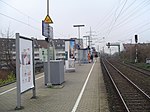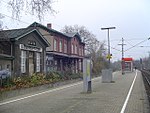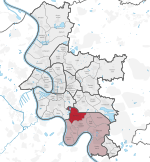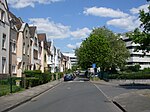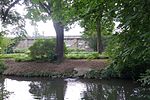Düsseldorf-Eller Süd station
North Rhine-Westphalia railway station stubsRailway stations in DüsseldorfRailway stations in Germany opened in 1967Rhine-Ruhr S-Bahn stationsRhine-Ruhr S-Bahn stubs ... and 2 more
S68 (Rhine-Ruhr S-Bahn)S6 (Rhine-Ruhr S-Bahn)
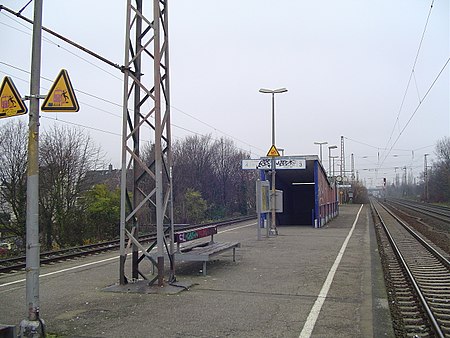
Düsseldorf-Eller Süd station is located approximately 5 kilometres south of Düsseldorf Hauptbahnhof in the district of Eller in the city of Düsseldorf in the German state of North Rhine-Westphalia. It is on the Cologne–Duisburg line and is classified by Deutsche Bahn as a category 5 station. It is served by Rhine-Ruhr S-Bahn lines S 6 every 20 minutes and by a few services of S 68 in the peak hour.
Excerpt from the Wikipedia article Düsseldorf-Eller Süd station (License: CC BY-SA 3.0, Authors, Images).Düsseldorf-Eller Süd station
Marburger Straße, Dusseldorf Eller (Stadtbezirk 8)
Geographical coordinates (GPS) Address Nearby Places Show on map
Geographical coordinates (GPS)
| Latitude | Longitude |
|---|---|
| N 51.197916666667 ° | E 6.8363333333333 ° |
Address
Düsseldorf-Eller Süd
Marburger Straße
40229 Dusseldorf, Eller (Stadtbezirk 8)
North Rhine-Westphalia, Germany
Open on Google Maps
